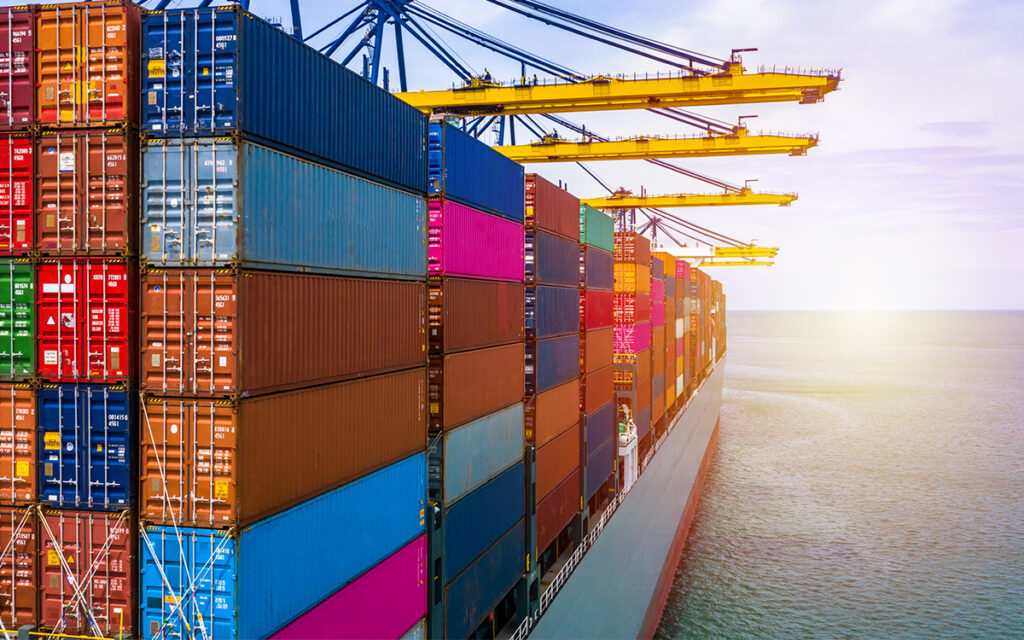
For companies shipping freight to and from Canada, you must know the rules, regulations, and guidelines for crossing into and out of the United States. Having accurate and complete paperwork is essential to avoid border delays due to missing or inaccurate documents.
This is especially true for shipments that require a Certificate of Origin.
Do Your Research
With trade between the United States and Canada exceeding $1 trillion annually, it’s essential to recognize that crossing into North American territory isn’t as simple as crossing state lines. It takes special attention to protocols, tax information, and other nuances that differ from province to province.
Regardless of the mode of transportation, it’s critical to get as much data on your freight as possible. The correct dimensions and weight will help you choose the best carrier to suit your needs and budget. Experts will ensure you know of any limitations that could affect your shipment, such as a maximum height or weight limit.
In addition, knowing the size and weight of your freight will allow you to determine if it will require transshipment, which involves the transfer of goods from one carrier to another for the remainder of the journey. While minor transshipment operations are considered non-routine and do not interrupt the place of origin of the direct journey, more extensive procedures may be subject to additional scrutiny. This is especially true for oversized cargo, used mattresses, and other restricted or band goods.
Secure Capacity
When selecting a freight carrier, pricing is a common concern. However, price is just one of the factors that should be considered. A shipper should also focus on quality and delivery time. If a company is only interested in price, it could result in lower rates and longer wait times.
The US-Canada border is home to a lot of cross-border freight movement. Two-way trade between the countries hit a staggering $2.4 billion daily in 2014. However, getting your freight over the border can be a complicated process.
Knowing what your shipments can and cannot contain is essential to avoid raising the ire of US Customs and Border Protection (CBP) officials. Certain items require extra care and documentation, whether you’re shipping electronics, chemicals, cars, garbage, or pesticides. For example, batteries should be sent with insulating material to prevent short-circuiting. To expedite your shipment, work with a trusted customs broker. They’ll ensure all the necessary documentation is prepped and attached before crossing the border.
Choose a Transparent Carrier
Shippers’ most common mistake on cross-border freight is incorrect or disorganized documentation. This often results in hefty fines and long wait times at the border. A customs broker is a good investment because they can ensure that all the required paperwork is prepared and completed accurately.
It’s also essential to choose a carrier experienced in shipping freight from Canada to US. A company specializing in this type of work will have extensive knowledge of the best routes, crossing sites, and practices to avoid unnecessary delays. Additionally, they will know the ins and outs of NAFTA COs, which are required if you want to claim preferential tariff treatment or reduced duties on eligible goods.
Finally, ensuring your carrier is bonded and licensed for the United States and Canada is critical. This will speed up the release process at the border and help you avoid costly fines if you’re unsure whether your freight meets these requirements. They have a complete list of items that are not permitted and those that require a permit to enter the country.
Take Advantage of Customs Drawbacks
While the new procedures like e-signatures and self-certification of origin will reduce red tape at the border and speed up shipments through customs, you still have to be diligent and complete all required forms and fields. If anything is missing, your shipment will sit at the border until the issues are resolved. This can result in fees, delays, and sleepless nights for everyone involved.
Ensure that your commercial invoice and bill of lading (BOL) match with comprehensive and accurate details. This will help the customs broker determine tariff classification and the duty amount to be paid. Also, provide your company’s BN and country of origin.
Many carriers specializing in cross-border shipping will know the best routes, crossing sites, and practices to get your freight through the Canadian border as quickly and smoothly as possible. They will have passports for their drivers, and they will be familiar with the peculiarities of Canadian driving habits, road conditions, and local laws and regulations. This will give them a distinct advantage over U.S.-based carriers, who may need to become more familiar with Canada’s rules, drives, and terrain.
Talk to a Specialist
Having an experienced and knowledgeable customs broker prepare your shipment’s paperwork can prevent headaches and border delays. A customs broker will coordinate all the duties, required forms, and taxes on your behalf, ensuring your shipment can clear the border immediately.
Lower-than-truckload (LTL) shipping is one of the most cost-effective methods for shipping freight from Canada to the United States. It allows small businesses to send their goods as part of a more significant load, sharing space with shipments that must reach their destination quickly.
If your business is time-sensitive, transportation’s fast border benefit can help you avoid delays and long wait times at the port of entry by getting your shipments pre-screened in advance. This turns hours of waiting into minutes at the border, keeping your drivers on schedule and allowing you to meet your delivery deadlines.
